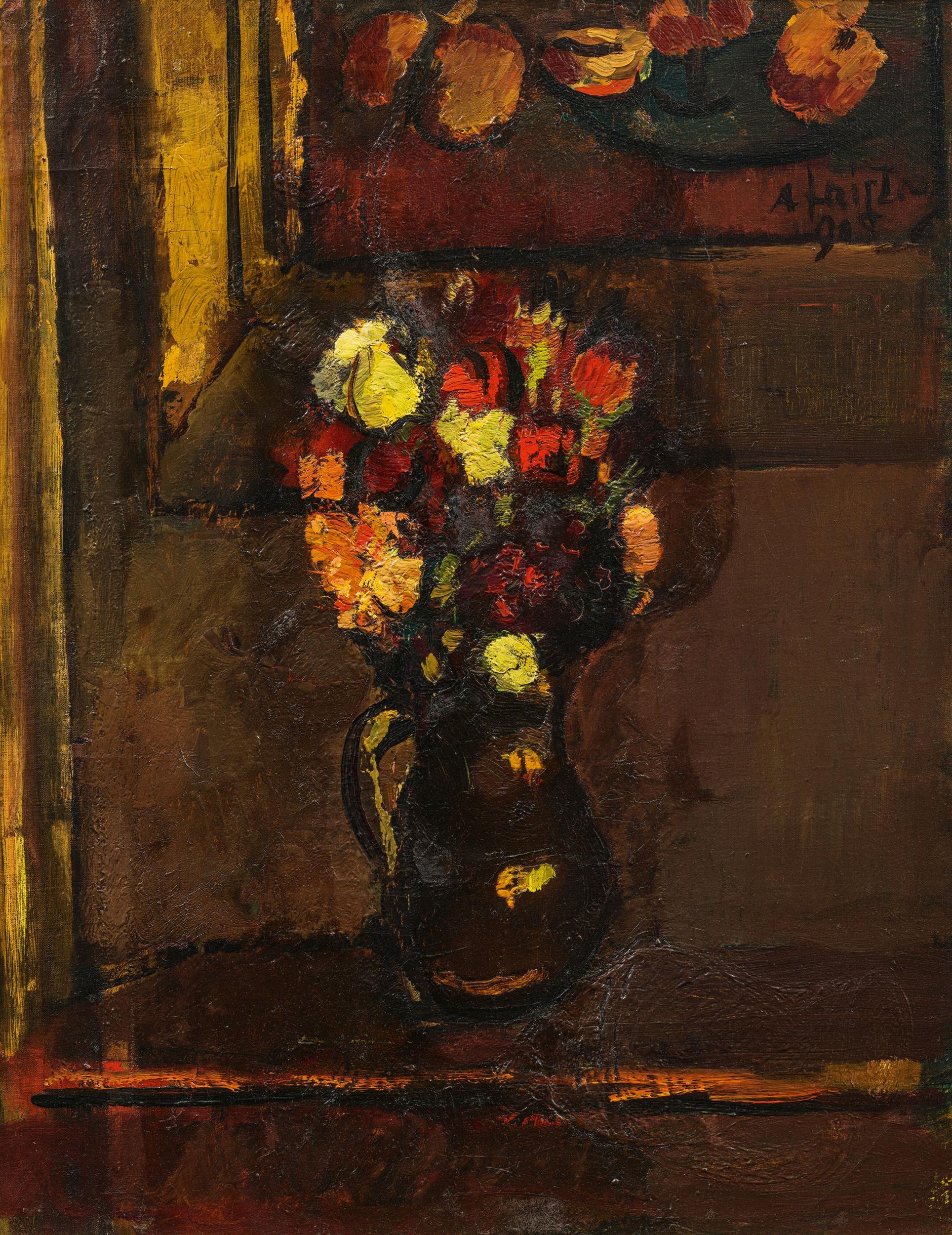0017
Anton Faistauer
(St. Martin bei Lofer 1887 - 1930 Wien)
„Blumen in Henkelkrug vor Bild“
1915
oil on canvas; framed
67 x 53 cm
signed and dated on the upper right: A. Faistauer / 1915
Provenance
private property, Austria
Literature
Franz Fuhrmann, Anton Faistauer 1887-1930, mit einem Werkverzeichnis der Gemälde, Salzburg 1972, no. 29 (b/w-ill., wrong dimensions)
Estimate: € 25.000 - 50.000
Result: € 32.000 (incl. fees)
Auction is closed.
Anton Faistauer was one of those artists who found their artistic path at an early age. Already before the First World War, Anton Faistauer had become very successful and had a good contact network of important collectors and art lovers. In 1909, together with Egon Schiele, Anton Peschka, Robin Christian Andersen, Franz Wiegele, Hans Böhler and others, he founded the “Neukunst-Gruppe” (“New Art Group”), who all left the Academy of Fine Arts in Vienna in protest against the conservative art establishment. In December 1909, the first exhibition of the young avant-garde group, led by Faistauer and Schiele, was held at the Pisko Gallery at Schwarzenbergplatz, Vienna. Further exhibitions of the Neukunst-Gruppe were held in Prague in 1910, and in Vienna in 1911 as part of the Hagenbund’s spring exhibition, which was a groundbreaking event for modernism. The Österreichische Galerie first purchased a painting by this important Austrian Expressionist in 1913.
After turning away from the two-dimensional style of Art Nouveau, Faistauer studied the work of Paul Cezanne, the most prominent proponent of French modernism, and thus found his own artistic language. His portraits, landscapes and still lifes draw their power from expressive colours, a preference for dark, mysterious hues with agitated, dynamic brushstrokes. Our flower still life from 1915 is characterised by the illusionist artifice of the picture-within-a-picture motif. Faistauer cleverly places his signature and the date in the upper right corner, in the still life of fruit that is hanging on the wall and partly cut off by the edge of the picture – a finely calculated, self-reflective reference to the painter and his oeuvre.
(Claudia Mörth-Gasser)



